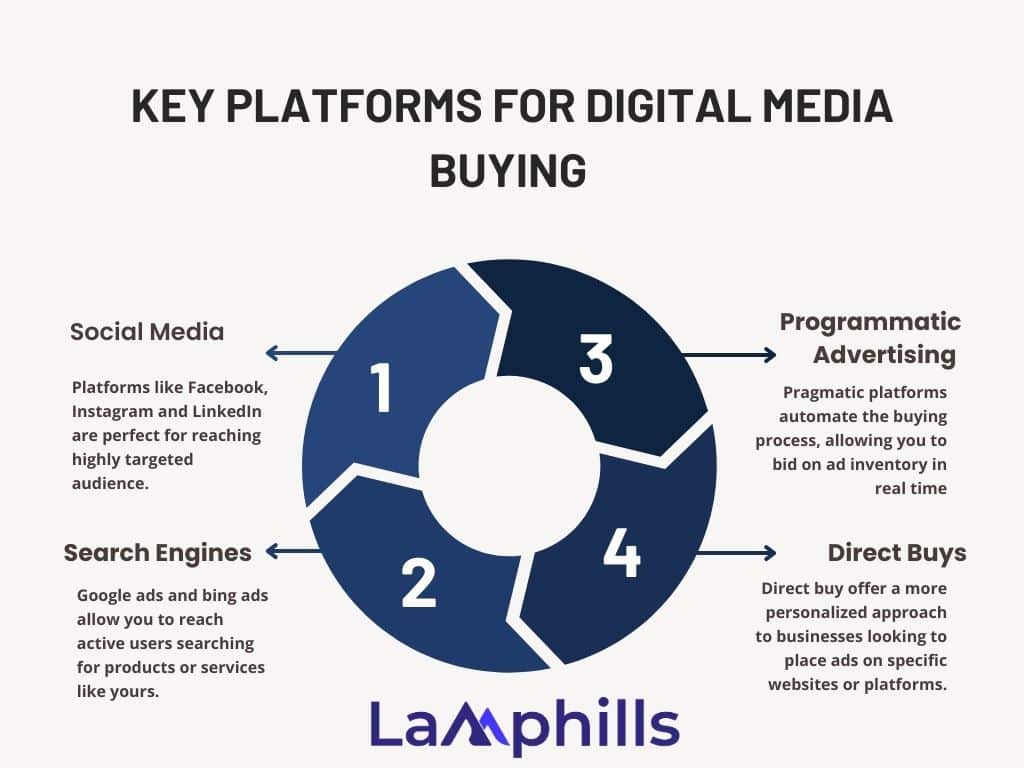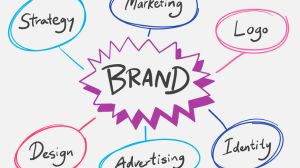The digital world evolves constantly, and businesses that wish to succeed must understand the foundational strategies and best practices that result in successful ad campaigns. One of the strategies that businesses adopt is media buying, which maximizes return on investment (ROI) and outperforms competitors. Digital media buying has become a cornerstone of modern marketing strategies. But what exactly does it entail, and how can you leverage it to boost your campaigns? I’ve been a digital marketer for half a decade and have seen firsthand the impact of media buying on a brand’s visibility and success.
So, this comprehensive guide simplifies digital media buying with expert insights and actionable advice to elevate your marketing efforts based on personal experience.
Key Points
- Digital media buying, in its simplest form, is the process of purchasing advertising space on digital platforms. It’s not just about buying ad space, but getting the right space at the right time for the right audience.
- It has various types, each tailored to different goals, platforms, and audience targeting strategies.
- Digital media buying offers unparalleled opportunities for brands to connect with their target audiences. However, it demands a strategic approach, continuous optimization, and deeper knowledge of the target audience.
- Digital media buying key platforms are social media, search engines, pragmatic advertising, and direct buys
What is Digital Media Buying?
Digital media buying, in its simplest form, is the process of purchasing advertising space on digital platforms. This could be on websites, social media channels, search engines, or mobile apps. However, digital media buying is more sophisticated now than ever. It’s not just about purchasing ad space; it’s about getting the right space at the right time for the right audience. This requires a deep understanding of consumer behavior, data analytics, and a strategic mindset.
I once believed the key to success in media buying was budget allocation. However, after running several campaigns with mixed results, I realized that timing and audience segmentation are just as crucial, if not more. I remember a campaign for a retail client where adjusting the ad schedule to target late-night shoppers resulted in a 30% increase in conversion rates. It was a pivotal moment that changed how I approached media buying.
What is an Example of Media Buying?
An example of media buying is a company purchasing ad space on Facebook to promote its new product to a specific audience. For instance, if a fitness brand wants to target young adults interested in health and wellness, they might buy display ads on Facebook that appear in the news feeds of users who fit that demographic profile. The brand would decide how much to spend, select the target audience, and choose the ad format. The campaign’s performance would be monitored and optimized for the desired results.
The Evolution of Digital Media Buying
In the past few years, programmatic advertising has revolutionized digital media buying. Programmatic allows marketers to automate the purchasing of ad space using AI and machine learning. But, as I’ve learned, while programmatic offers efficiency, it’s not a silver bullet. The human touch is still indispensable.
I’ve experimented with fully automated and manually optimized campaigns. One outstanding experience was that an automated campaign was underperforming because it didn’t account for regional nuances in the audience. At a point, I manually tweaked the settings and added human oversight to double the campaign’s ROI. This taught me the importance of balancing automation with human intuition.
Is Media Buying a Skill?
Yes, media buying is a skill. It requires a deep understanding of various digital platforms, audience targeting, ad formats, budgeting, and analytics.
Types of Digital Media Buying
Digital media buying has various types, each tailored to different goals, platforms, and audience targeting strategies. The following are some of the primary types of digital media buying:
#1. Programmatic Media Buying
Programmatic buying uses automated systems and algorithms to purchase ad space. With this, advertisers can bid for digital ad impressions across various websites, apps, and platforms. This type of buying is data-driven, enabling highly targeted and efficient ad placements. Programmatic buying can be done in the following way:
- Real-Time Bidding (RTB): Advertisers bid for ad impressions in real-time, with the highest bid winning the placement.
- Programmatic Direct: A direct deal between the advertiser and the publisher, typically with a fixed price and guaranteed ad placements.
#2. Direct Media Buying
Direct media buying involves negotiating and purchasing ad space directly from publishers or platforms. This method is often used for high-profile placements on popular websites, apps, or social media platforms. I love that direct buying offers more control over ad placement and timing. Unfortunately, it’s more expensive and less flexible than programmatic buying.
#3. Social Media Buying
Social media buying focuses on purchasing ad space on social media platforms like Facebook, Instagram, Twitter, LinkedIn, and TikTok. This type of buying leverages the detailed audience targeting options available on these platforms. With it, advertisers can reach specific demographics based on interests, behaviors, and more. Generally, social media ads can be in various formats, including video ads, carousel ads, sponsored posts, and stories.
#4. Search Engine Marketing (SEM)
SEM involves buying ad placements on search engine results pages (SERPs) through platforms like Google Ads or Bing Ads. Advertisers bid on keywords relevant to their business, and their ads appear when users search for those terms. SEM is highly effective for capturing intent-driven traffic and is often used for pay-per-click (PPC) campaigns.
#5. Display Advertising
Display advertising involves buying banner ads, video ads, or other visual ads on websites, apps, or networks like Google Display Network. These ads can be static or dynamic and are usually targeted based on audience behavior, interests, or demographics. Generally, display ads are effective for brand awareness and retargeting campaigns.
#6. Video Advertising
Video advertising refers to buying ad space on platforms like YouTube, Hulu, or social media where video content is consumed. It can be skippable or non-skippable and is often used to engage audiences with rich, visual storytelling. This type of media buying is increasingly popular due to the growing consumption of video content online.
#7. Native Advertising
Native advertising involves placing ads that blend seamlessly with the content of the platform they appear on. These ads match the look, feel, and function of the media format where they are displayed. Generally, they are less intrusive and more engaging. Examples include sponsored articles, promoted social media posts, and in-feed ads.
#8. Connected TV (CTV) Advertising
Connected TV advertising is a type of media buying focused on delivering ads on streaming services and connected TV devices like Roku, Amazon Fire TV, and Apple TV. As more consumers shift to streaming, CTV ads have become part of media buying strategies. CTV stands out because it offers precise targeting and high engagement rates.
#9. Affiliate Marketing
In affiliate marketing, advertisers pay third-party publishers (affiliates) to generate traffic or sales through their promotional efforts. This form of media buying is performance-based, with advertisers only paying for conversions or users’ actions. This makes it a cost-effective option for many businesses.
#10. Email Advertising
Email advertising involves purchasing ad placements within email newsletters or sending sponsored emails to targeted lists. This type of media buying is effective for reaching specific audiences with tailored messages and offers, particularly in B2B marketing or e-commerce.
Read Also: What Does a SEM Specialist Do? Job Description for 2024
The Media Buying Process: A Step-By-Step Guide
Navigating the digital media buying landscape requires a strategic approach. The following is a breakdown of the key steps involved:
#1. Setting Clear Objectives
The first step in any digital media buying strategy is setting clear objectives. What do you want to achieve with your campaign? Are you looking to increase brand awareness, drive traffic to your website, or boost conversions? Defining your goals will shape your media buying strategy and also guide your decisions on budget allocation, ad formats, and platform selection.
#2. Research
Understanding your audience is the first step to a successful media buy. The following questions will help you better understand your audience. Who are they? What are their interests? Which platforms do they frequent? Tools like Google Analytics, social media insights, and third-party data providers can offer invaluable insights.
#3. Platform Selection
Choosing the right platform is crucial. Each platform offers unique advantages, so it’s important to understand where your audience spends their time. For example, TikTok and Snapchat are ideal for Gen Z audiences. On the other hand, LinkedIn is for B2B marketing. A recent study by LinkedIn showed that 78% of B2B marketers saw an increase in lead quality after investing in LinkedIn ads.
#4. Ad Formats and Creative
Different platforms offer various formats, from display and video ads to native ads and sponsored content. The key is to match the format with your campaign objectives and audience preferences. A report by HubSpot in 2023 highlighted that video ads continue to outperform other formats, with a 54% higher engagement rate than static ads.
#5. Budgeting
Effective budgeting is essential. According to a 2023 report by eMarketer, digital ad spending in the U.S. is expected to surpass $270 billion this year. Allocating your budget wisely across platforms can make or break your campaign. Consider factors like ad format costs, platform fees, and potential ROI when setting your budget.
In one campaign, we split the budget equally across several channels. However, we noticed that LinkedIn was driving higher conversions at a lower cost. By reallocating more budget to LinkedIn, we maximized our client’s ROI. Always be prepared to adjust your budget based on real-time data.
#6. Strategy Development
A robust strategy is your roadmap to success. This involves selecting the right platforms—such as Google Ads, Facebook, or LinkedIn—based on where your target audience is most active. It’s also about choosing the right ad formats (e.g., video, display, native) that resonate with your audience.
#7. Negotiation
Negotiating the best deals with media outlets can save money and boost your campaign’s effectiveness. Aim to secure the best possible ad placements at competitive rates when dealing with publishers or using programmatic platforms.
#8. Implementation
Once your strategy is in place, it’s time to launch your campaigns. Use tools like Google Ads Manager or Facebook Ads Manager to schedule, monitor, and adjust your ads in real-time.
#9. Monitoring and Optimization
Digital media buying isn’t a set-it-and-forget-it process. Regular monitoring and optimization are key to ensuring your ads are performing well. According to a 2024 study by Statista, 58% of marketers believe that constant optimization is critical to the success of their digital advertising campaigns. So, use analytics to track performance metrics and make data-driven adjustments.
During a year-long campaign, we set up weekly performance reviews. This allowed us to spot trends early and make adjustments. One adjustment—shifting the budget towards mobile users—led to a 25% increase in conversions in the last quarter. Never underestimate the power of regular optimization.
Key Platforms for Digital Media Buying

The following are some of the popular digital media buying platforms and their unique advantages:
#1. Social Media
Platforms like Facebook, Instagram, and LinkedIn are perfect for reaching highly targeted audiences. With detailed demographic data and sophisticated targeting options, social media ads can be incredibly effective. A 2023 report from Hootsuite reveals that social media advertising spending is expected to reach $268 billion by 2024, highlighting its growing importance.
#2. Search Engines
Google Ads and Bing Ads allow you to reach active users searching for products or services like yours. This intent-driven approach can lead to higher conversion rates. WordStream reports that the average conversion rate across all industries on Google Ads is 3.75%. In essence, it’s a highly effective channel for many businesses.
#3. Programmatic Advertising
Programmatic platforms automate the buying process, allowing you to bid on ad inventory in real time. Generally, this approach saves time and ensures that your ads are shown to the right people at the right time. According to eMarketer, programmatic ad spending is expected to reach $147 billion globally in 2024.
#4. Direct Buys
Direct buys offer a more personalized approach to businesses looking to place ads on specific websites or platforms. Generally, this involves negotiating directly with publishers or networks to secure premium ad placements.
Lamphills Digital Media Buying Checklist
This Lamphills digital media buying checklist enables marketers and advertisers to ensure that all necessary steps are taken for a successful digital media buying campaign. It streamlines the process, reduces errors, and maximizes the efficiency and effectiveness of the campaign. Below are key components typically included in a digital media buying checklist:
Download Lamphills Digital Media Buying Checklist
Challenges in Digital Media Buying
Despite its advantages, digital media buying comes with its own set of challenges:
#1. Ad Fraud
Ad fraud is one of the major challenges in digital media buying. The World Federation of Advertisers reports that $81 billion was lost to fraudulent activities in 2023. If due measures are not taken, it’ll only get worse. Therefore, protecting your campaigns from fraud is essential to preserving your budget.
#2. Viewability
One of the reasons why people buy media is to increase sales and create awareness. Secondly, working with platforms that offer viewability guarantees can help improve this metric. The Media Rating Council (MRC) found that the average viewability rate for display ads is just 55% in 2023.
#3. Ad Blockers
Ad blockers pose a significant challenge, with an estimated 42.7% of internet users worldwide using ad blockers in 2023, according to Statista. To mitigate this, consider using less intrusive ad formats or investing in native advertising.
#4. Brand Safety
Ensuring that your ads appear in appropriate contexts is vital for protecting your brand’s reputation. You can use tools like DoubleVerify or Integral Ad Science to help monitor and maintain brand safety.
Metrics and KPIs to Track
Tracking the right metrics is essential for measuring the success of your digital media buying efforts. The following are some of the KPIs I track to assess my efforts.
- Impressions and Reach
- Click-Through Rate (CTR)
- Conversion Rate
- Return on Ad Spend (ROAS)
- Cost Per Acquisition (CPA)
Best Practices for Successful Media Buying
To maximize the effectiveness of your digital media buying efforts, consider the following best practices:
#1. Data-Driven Decision Making
Leverage data and analytics to inform your media buying decisions. Platforms like Google Analytics and Facebook Insights offer valuable data that can help optimize your campaigns.
#2. A/B Testing
Testing different ad creatives, formats, and targeting options is key to finding what works best for your audience. A/B testing can improve your campaign performance over time.
#3. Audience Segmentation
Targeting specific audience segments can lead to more personalized and effective ads. Consider using demographic, geographic, and behavioral data to create segmented campaigns.
#4. Retargeting
Retargeting allows you to re-engage users who have previously interacted with your brand. According to a 2023 report by Criteo, retargeting ads can boost conversion rates by up to 70%.
Emerging Trends in Digital Media Buying
The digital media buying landscape is constantly evolving. The following are some emerging trends to keep an eye on:
#1. AI and Machine Learning
AI and machine learning keep revolutionizing digital media buying by automating processes and optimizing ad placements. According to Gartner, AI-driven marketing will account for 85% of all customer interactions by 2025.
#2. Programmatic TV
Programmatic TV is gaining traction as more viewers shift to digital streaming platforms. This allows advertisers to buy TV ad space programmatically and reach audiences in a more targeted and cost-effective way.
#3. Voice Search Ads
With the rise of smart speakers and voice assistants, voice search ads are becoming a new frontier in digital advertising. According to Adobe, voice search is expected to account for 50% of all searches by 2024.
#4. Influencer Partnerships
Influencer marketing continues to grow as a powerful tool for brands. Partnering with influencers can enhance your digital media buying efforts by leveraging their established audiences and authentic content. According to a 2024 survey by Influencer Marketing Hub, 89% of marketers believe that influencer marketing ROI is comparable to or better than other marketing channels. Integrating influencers into your campaigns can significantly amplify your reach and engagement.
#5. The Shift to First-Party Data
With increasing concerns around data privacy and the phasing out of third-party cookies, shifting to first-party data has become a major focus for marketers. Building and leveraging your data sets, such as customer email lists and website analytics, allow for more accurate targeting and better campaign performance. According to a 2023 survey by Deloitte, 73% of marketers reported improved ROI when using first-party data.
Digital Media Buying Agency
A digital media buying agency is a specialized service provider that plans, purchases, and optimizes digital advertising spaces across various online platforms. These agencies help businesses reach their target audiences effectively by securing ad placements on websites, social media, mobile apps, search engines, as well as other digital channels.
Key Services Offered by a Digital Media Buying Agency
The following are some of the key services offered by digital media buying agencies:
- Media strategy and planning
- Audience targeting
- Programmatic media buying
- Direct media buying
- Ad creation and development
- Campaign management and optimization
- Performance reporting and analytics
- Cross-platform integration
Benefits of Hiring a Digital Media Buying Agency
The following are some of the reasons why businesses outsource media buying to agencies:
- Expertise and Experience
- Efficiency
- Scalability
- Time-Saving
- Data-Driven Decisions
Examples of Digital Media Buying Agencies
The following are some examples of digital marketing agencies:
- WPP’s GroupM
- Omnicom Media Group
- Publicis Groupe’s Zenith
- Dentsu Aegis Network
- Havas Media
Conclusion
Digital media buying offers unparalleled opportunities for brands to connect with their target audiences. However, success requires more than spending money on ads; it demands a strategic approach, continuous optimization, and a deep understanding of your audience.
As you embark on your next campaign, remember the words of marketing legend David Ogilvy: “Don’t count the people you reach; reach the people who count.” In essence, the people who count, your ideal audience should be your primary focus. So, your campaign should focus on these people.
Related Articles
- How to Do a Perfect Product Branding in 2024
- Earned Media Value Explained: Why It Matters and How to Calculate It
- 25 Powerful Advertisement Examples You Should Take Inspiration From
- Purpose of Branding: 10 Benefits for Your Business






